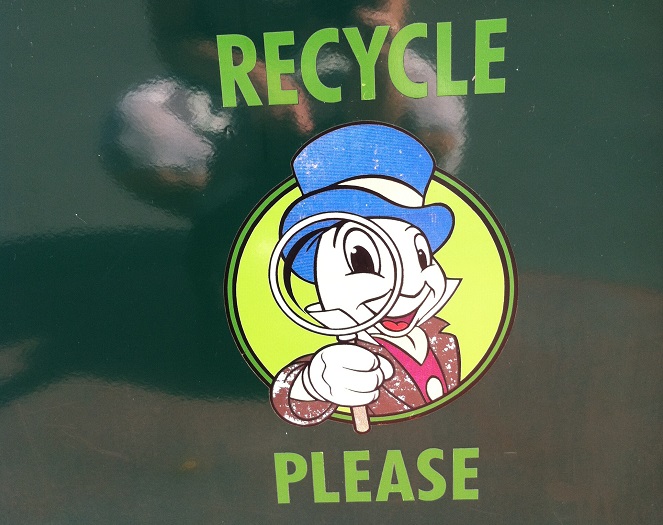 When I think of Disneyland, “magic” and “possibility” are some of the words that immediately leap into my mind. But after a recent visit to Disneyland Resort with my family, “sustainability” is another word that, for me, has become synonymous with Disney. Company founder Walt Disney was a firm believer in taking care of the environment, and because of his leadership, The Walt Disney Company continues to be at the forefront of sustainable tourism, with dedication to the environment at all of its Disney destinations around the globe.
The term “sustainable tourism” can be defined as tourism that strives to avoid damage to the environment, economy and cultures of the locations where it takes place. At the same time, it provides a positive experience for the local people and the tourists.
When I think of Disneyland, “magic” and “possibility” are some of the words that immediately leap into my mind. But after a recent visit to Disneyland Resort with my family, “sustainability” is another word that, for me, has become synonymous with Disney. Company founder Walt Disney was a firm believer in taking care of the environment, and because of his leadership, The Walt Disney Company continues to be at the forefront of sustainable tourism, with dedication to the environment at all of its Disney destinations around the globe.
The term “sustainable tourism” can be defined as tourism that strives to avoid damage to the environment, economy and cultures of the locations where it takes place. At the same time, it provides a positive experience for the local people and the tourists.
Sustainable tourism at Disneyland Resort:
- Succulents and native plants are used throughout the Resort, which means less water is used to maintain landscaping.
- Recycling receptacles are conveniently located throughout the park and in the employee areas.
- Disneyland Resort collects 20 different recyclables, including plastic bottles and aluminum cans, glass bottles, cardboard, paper, plastics, green waste and metal and construction debris.
- The five railroad trains that chug around the property use a soy-based biodiesel to fuel their steam boilers, and the Mark Twain Riverboat burns a blend of cooking oil biodiesel as it paddles visitors down the river. According to Disneyland, this eliminates “an average of 150,000 gallons of petroleum diesel use per year.”
Some additional sustainable facts:
- At the Circle D Ranch, which is where the animals of the Disneyland Resort call home, 99.8 percent of waste generated at the location is diverted from landfills.
- Collecting animal waste, coffee grounds from Resort restaurants and laundry lint from hotel dryers for composting helped Circle D to become the first facility within The Walt Disney Company or any theme park to earn a Zero Waste certification from the U.S. Zero Waste Business Council in 2014.
- Disneyland Resort hotels partner with Clean the World to donate more than 1,000 pounds of partially used guest room soaps and shampoo products per month, which are sanitized and recycled into life-saving hygiene products for at-risk communities domestically and around the globe.
- The Finding Nemo Submarine Voyage submarines use magnetic coils to propel the subs, eliminating the use of hundreds of thousands of gallons of diesel fuel each year, according to Disneyland.
- Sweet treats are made at Disneyland Resort’s 10,000-square-foot central bakery, which was designed with numerous environmentally friendly features, including rooftop solar panels, solar tubes that provide natural lighting and ice makers that form a block of ice during the night and send chilled water to the air conditioning system to cool the building during the day.
- Porous asphalt paving in the parking lot captures, filters and returns rainwater into the ground, serving as a natural recycling system.
The next time you visit a Disney Resort, soak in the magic and revel in the amazing sustainability of it all.
“Landscapes of great wonder and beauty lie under our feet and all around us. They are discovered in tunnels in the ground, the heart of flowers, the hollows of trees, fresh-water ponds, seaweed jungles between tides and even drops of water.
Life in these hidden worlds is more startling in reality than anything we can imagine. How could this earth of ours, which is only a speck in the heavens, have so much variety of life, so many curious and exciting creatures?” – Walt Disney